Why is network automation important?
Network automation offers a scalable way to simplify network configuration management while improving its integrity and uptime. Here's why it's indispensable:
- Reduced manual intervention: Mundane, repetitive tasks like configuration pushes or compliance checks can be scheduled and executed automatically.
- Increased efficiency: Tasks that take hours manually can be executed in minutes with automation.
- Improved consistency: Automation enforces standard configurations, minimizing the risk of misconfigurations.
- Better visibility: Automation tools offer real-time insights into configuration changes, compliance status, and device health.
- Enhanced security: Automated backups and version control help detect unauthorized changes and revert to safe configurations instantly.
In contrast, manual management can lead to inefficiencies, security loopholes, and frequent downtime, preventing administrators from focusing on strategic operations.
Solving real-world operational challenges using network automation
Network automation spans across a variety of scenarios that impact daily operations, security, and scalability. Common use cases include:
- Zero-touch provisioning (ZTP): Automatically configure devices when they are first connected to the network, reducing onboarding time.
- Firmware upgrades: Schedule and deploy firmware patches in bulk without disrupting live operations.
- SNMP/TACACS Configuration: Automate the deployment and auditing of access control and network monitoring settings.
- Policy-based compliance: Enforce internal and industry regulations through scheduled compliance scans and remediation.
- Bulk configuration changes: Apply consistent updates, such as VLAN changes or ACL rules, to multiple devices simultaneously.
Each of these scenarios, when automated, improves operational speed and reduces the chance of human error, especially during large-scale rollouts or audits.
Benefits of network automation
Managing modern network infrastructures manually is not only time-consuming but also prone to costly errors and security risks. Network automation changes that by streamlining operations, enforcing consistency, and reducing the burden on IT teams. Here’s how a robust network automation tool can transform day-to-day network management:
With network automation:
- Fewer human errors, less repetition: Routine tasks like backups, audits, and rollouts are automated, minimizing manual intervention.
- Unwanted changes are tracked: Unauthorized or misconfigured changes are detected, notified, and rolled back immediately.
- Stronger compliance enforcement: Policies are applied continuously across devices to meet regulatory and internal standards.
- Better device security: Configuration drift is eliminated and firmware vulnerabilities are monitored proactively.
- Improved team productivity: IT staff can focus on high-impact initiatives instead of getting bogged down in reactive tasks.
Without network automation:
- Manual workloads overwhelm teams: Admins face mounting pressure with repetitive tasks and fragmented visibility.
- Inconsistent configurations: Manual changes often lead to discrepancies and misalignment across environments.
- Increased downtime risks: Missed updates or delayed fixes can cause avoidable outages.
- Lack of real-time alerts: There's no immediate visibility into unauthorized changes or compliance issues.
ManageEngine Network Configuration Manager: A must-have network automation tool
ManageEngine Network Configuration Manager is a powerful NCCM (Network Configuration and Change Management) solution designed to simplify, secure, and scale your network automation strategy.
Unlike manual methods or siloed scripts, NCM delivers end-to-end automation, governance, and visibility across your multi-vendor infrastructure.
Benefits of having Network Configuration Manager as your network automation tool
Here are some features of Network Configuration Manager that allows admins to automate their enterprise networks easily:
Configuration backups
Automated backups
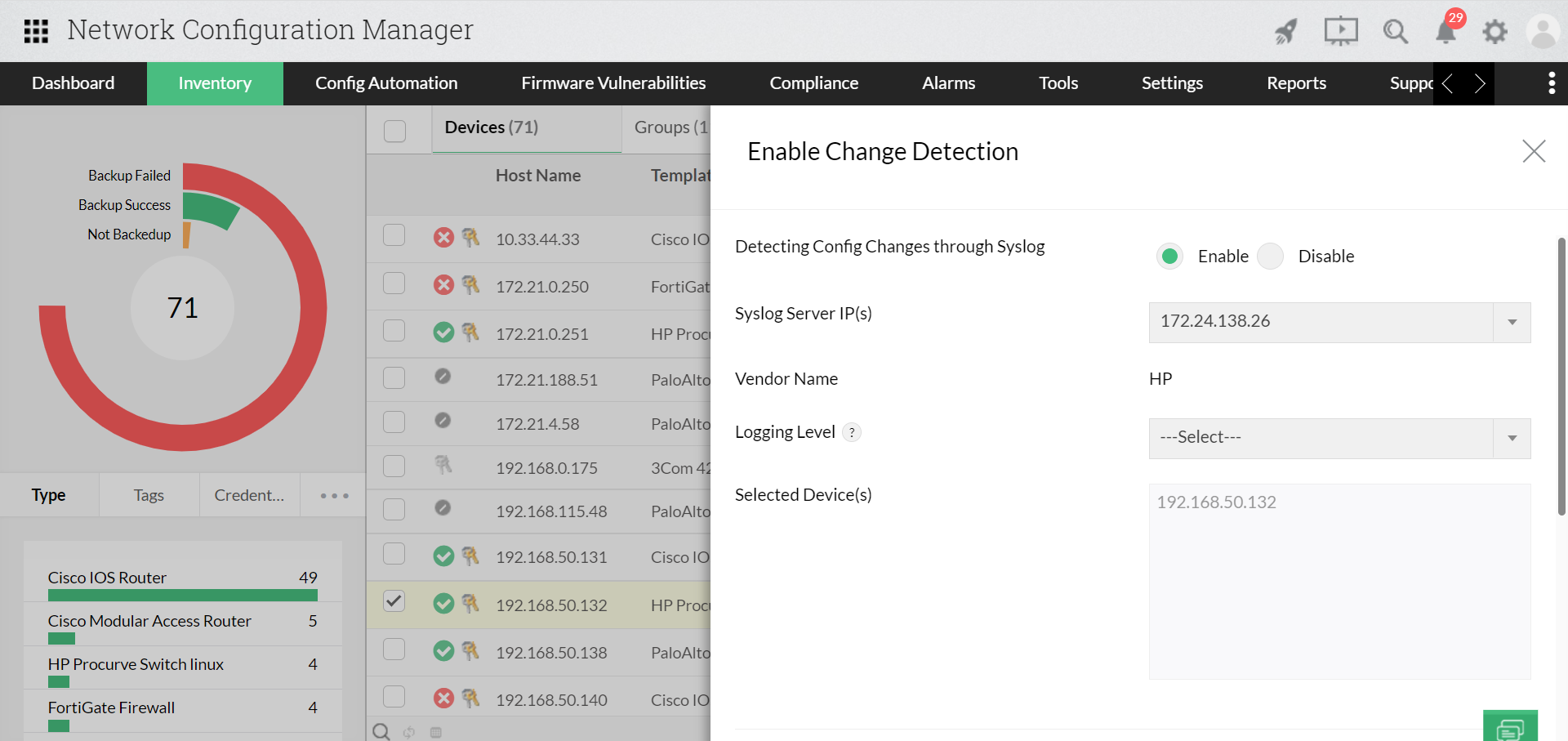
- When an admin, operator, or user logs in and out of a network device, the device generates a syslog message.
- These syslog messages reach the built-in syslog server in Network Configuration Manager, which looks for the logout message.
- Upon receiving the logout message, Network Configuration Manager triggers a configuration backup of that network device. This is because whenever someone logs out of a device, there is a possibility that they made a change in the configuration file of that device.
- This backed-up configuration file is then compared to the latest configuration version of that device in Network Configuration Manager and is checked for any new changes.
- If any change is detected, the backed-up configuration file is encrypted and stored in Network Configuration Manager's database. If no change is detected, the backed-up file is discarded.
Scheduled backups
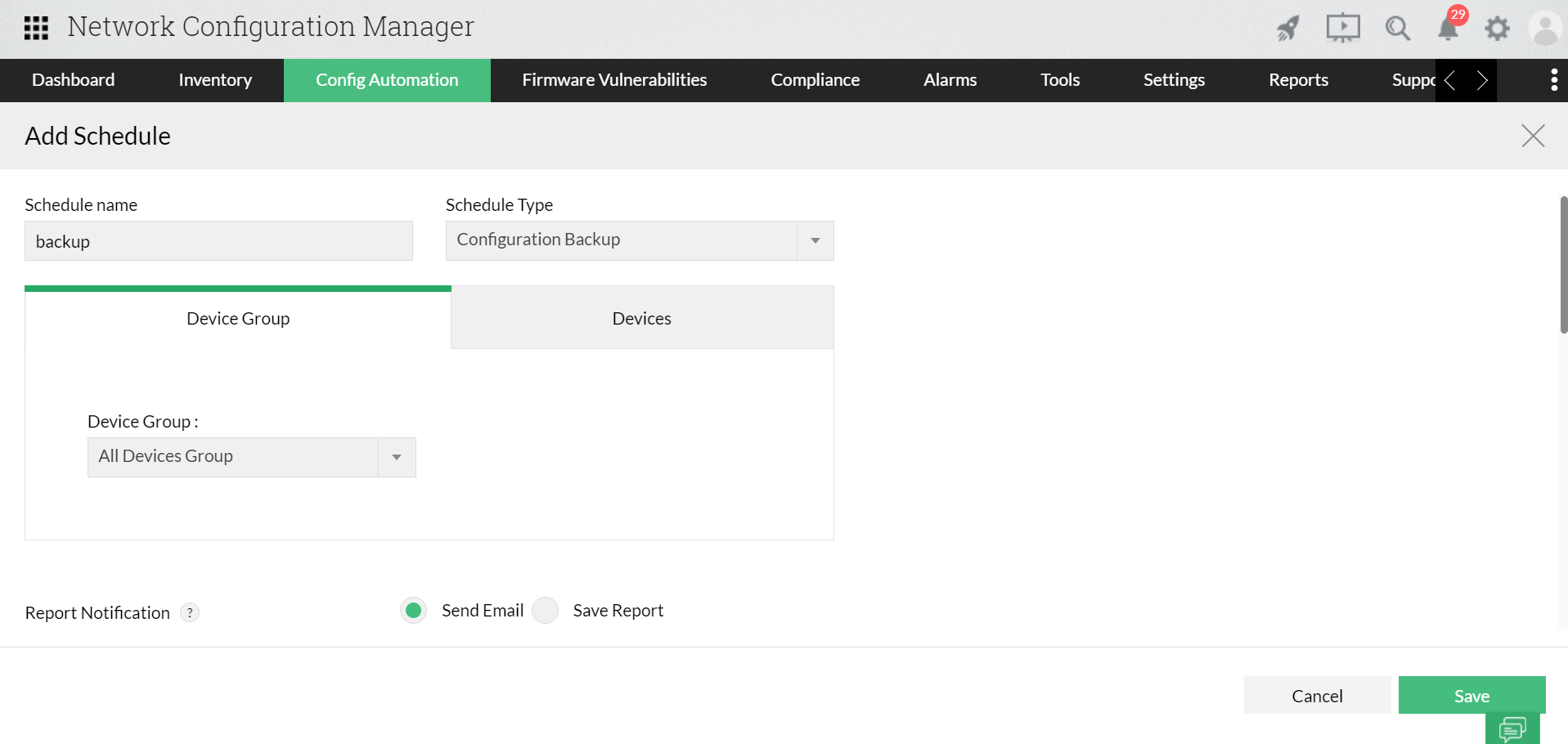
- You can schedule repetitive backups of core devices for any time you want. Network Configuration Manager will execute and finish backups automatically at that desired time.
- The supported scheduling options include hourly, daily, weekly, monthly, or one-time.
Change management
Change notifications
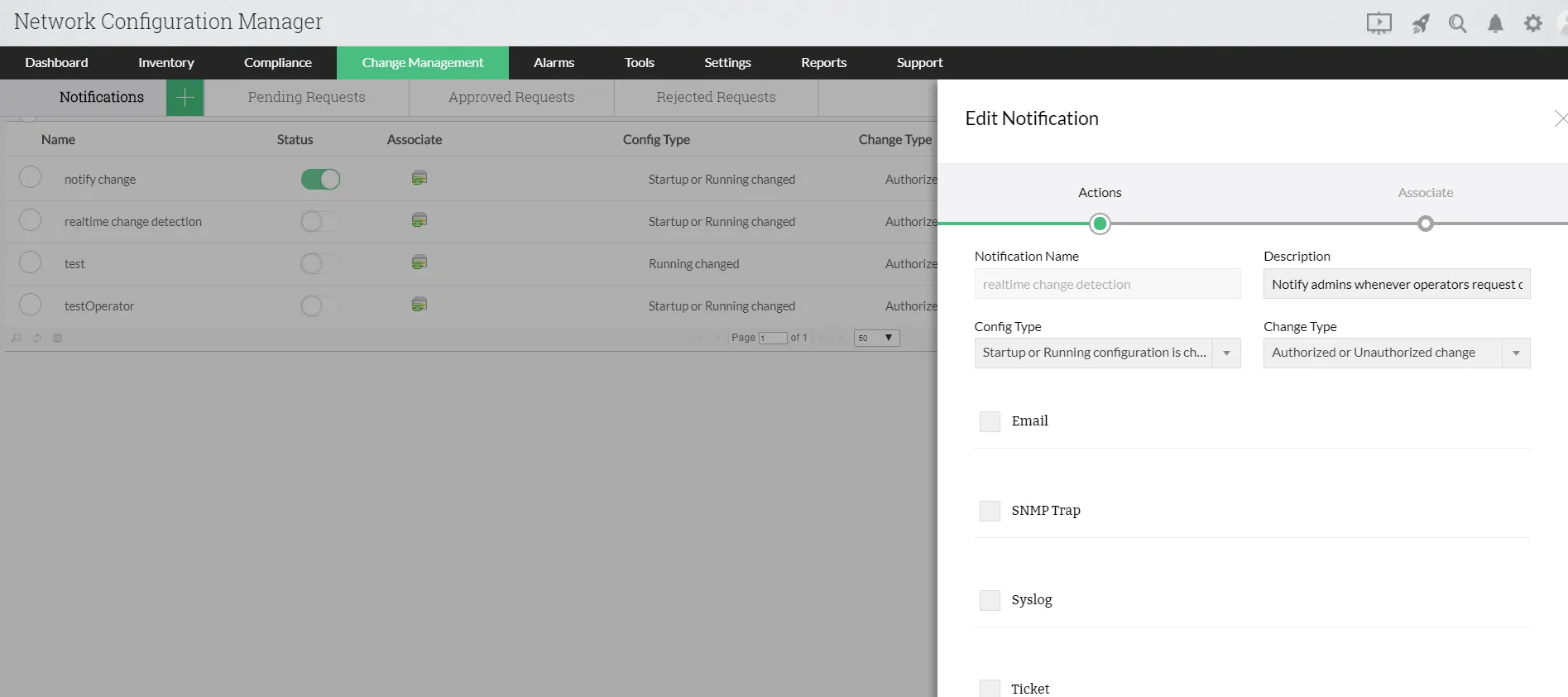
- Receive real-time change notifications about any changes made in your network infrastructure. This helps you avoid missing any changes made to configurations before production.
- Notification options include emails, SNMP traps, syslog messages, and tickets.
Rollback
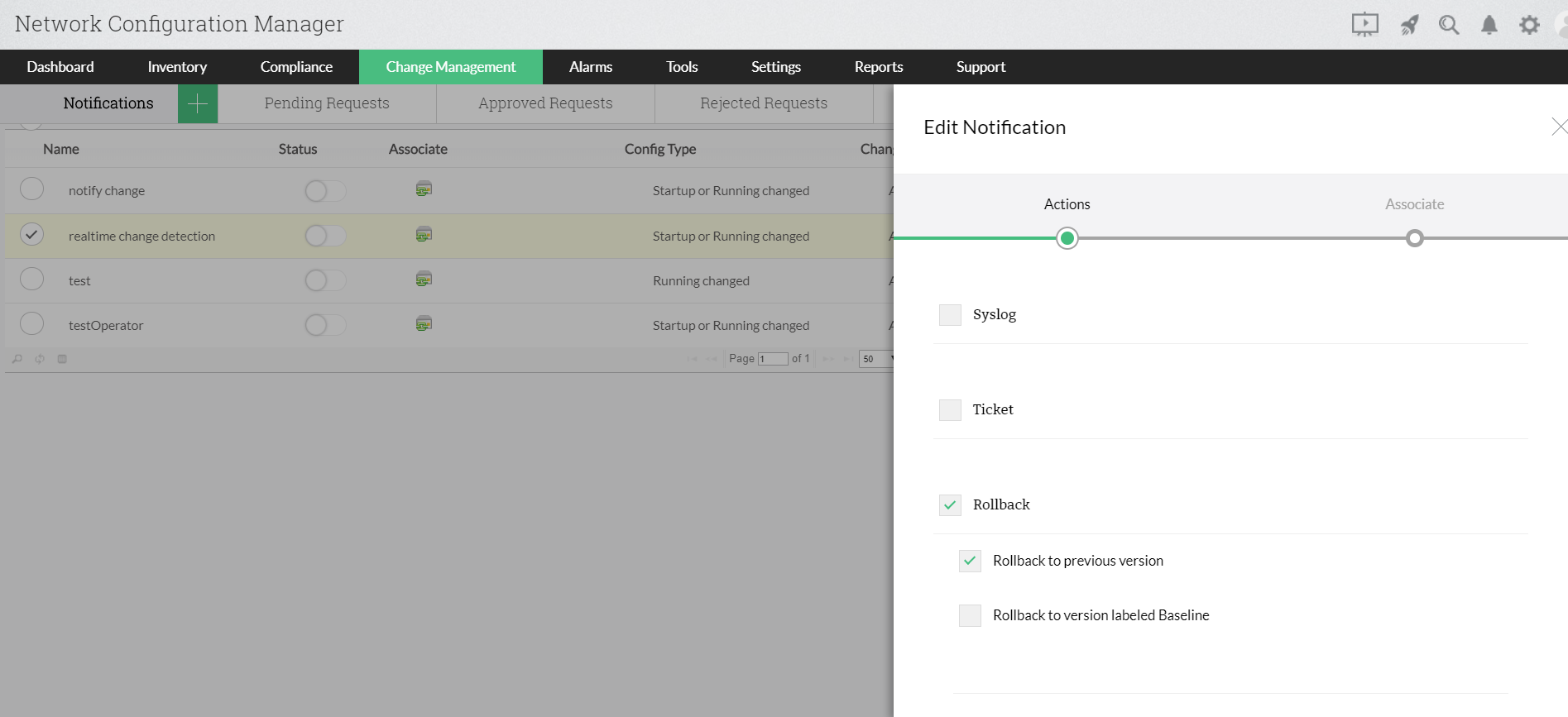
- If any unwanted changes are detected, Network Configuration Manager automatically reverts the configuration to the previous stable version.
- For this, the rollback option needs to be enabled for the device. With rollback enabled, no new device changes will take place, keeping the device secure.
Automation with script templates
Configlets
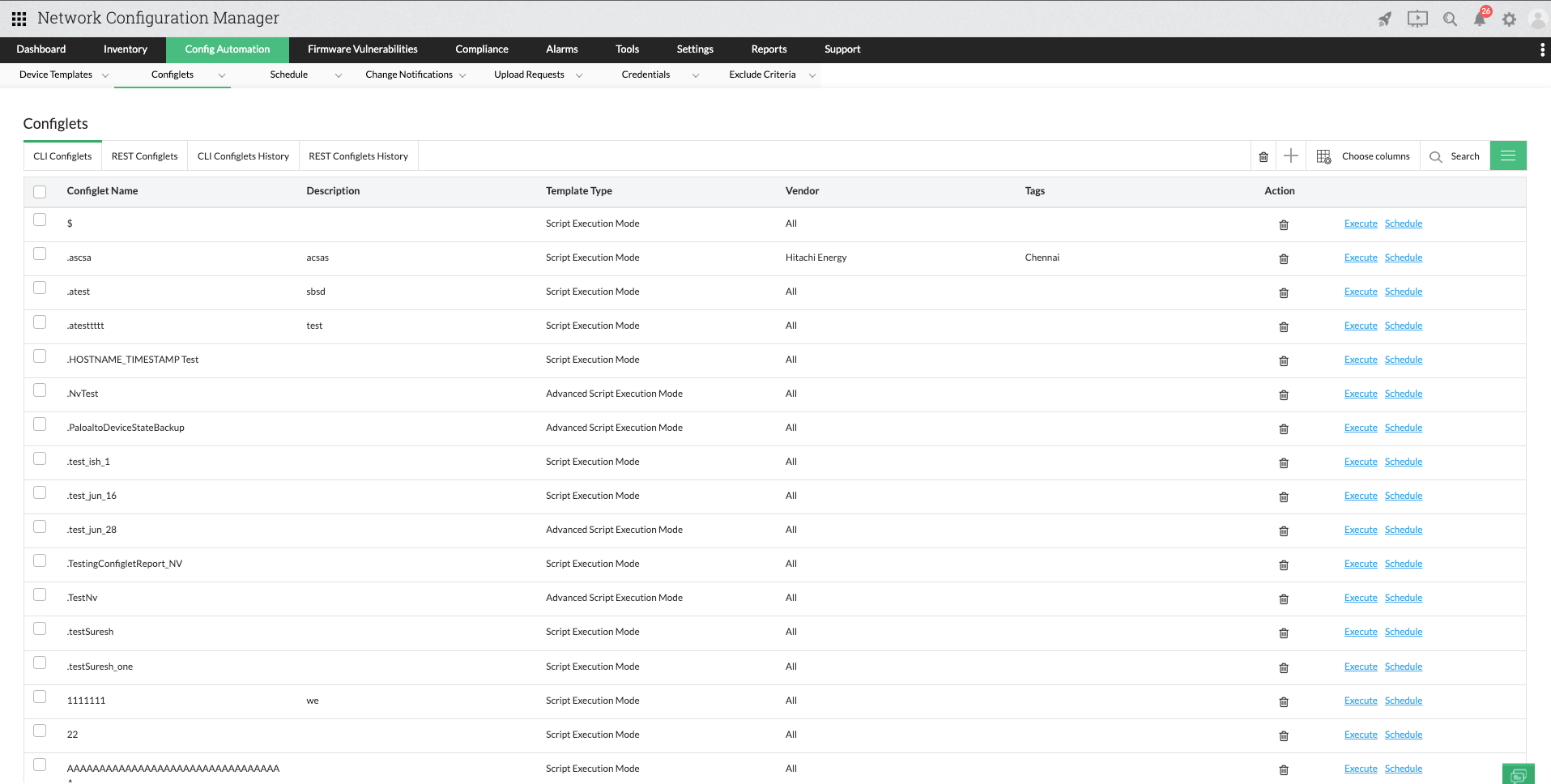
- Network Configuration Manager provides automation script templates called Configlets for the bulk execution of tasks or uploading security patches.
- These Configlets can also be used to rectify noncompliance issues with devices instantly.
- Configlets can also be scheduled according to your requirements.
Compliance
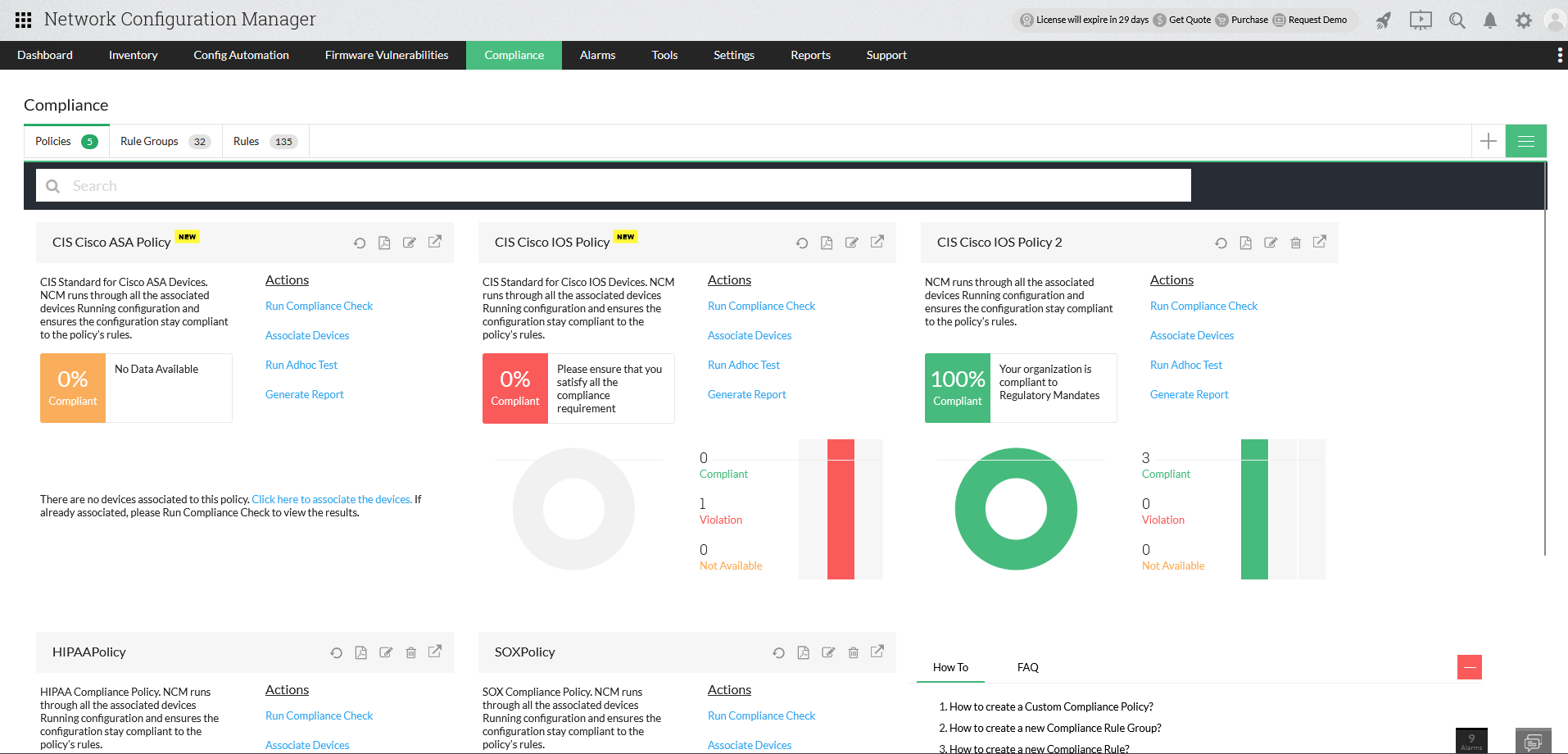
- Network Configuration Manager automatically checks if your devices are compliant with the default policies and lists them if they are not.
- The default compliance policies include the CIS, SOX, HIPAA, and PCI DSS.
- You can also create custom policies according to your organization's requirements.
Firmware vulnerability management
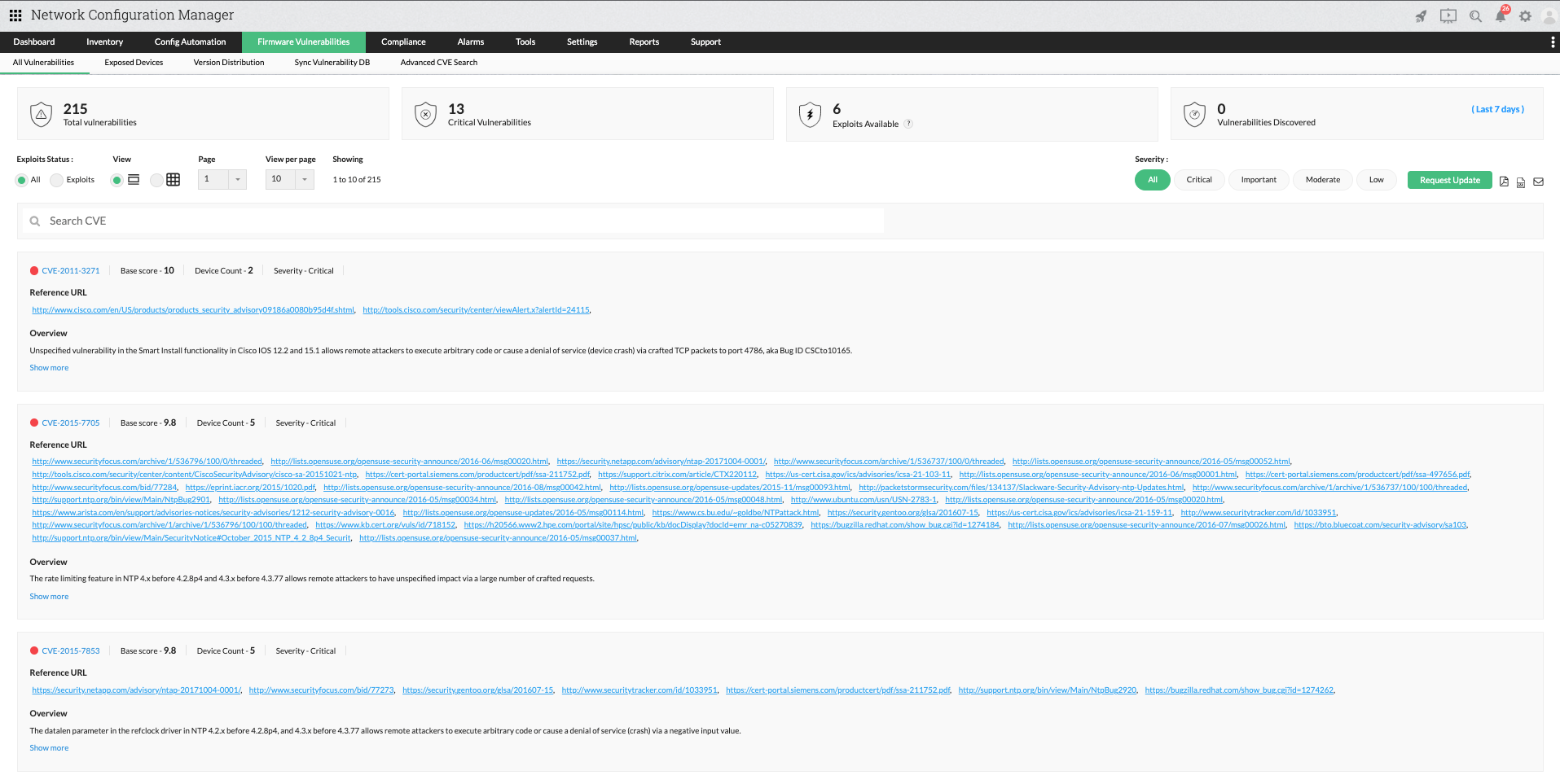
- Network Configuration Manager automatically gets firmware vulnerability data from NIST and lists the devices that are vulnerable, along with the CVE IDs, base scores, severity levels, and links with patches.
- Network Configuration Manager updates its data from NIST every day at a particular time. This can be modified.
Dashboard and reports
Dashboard
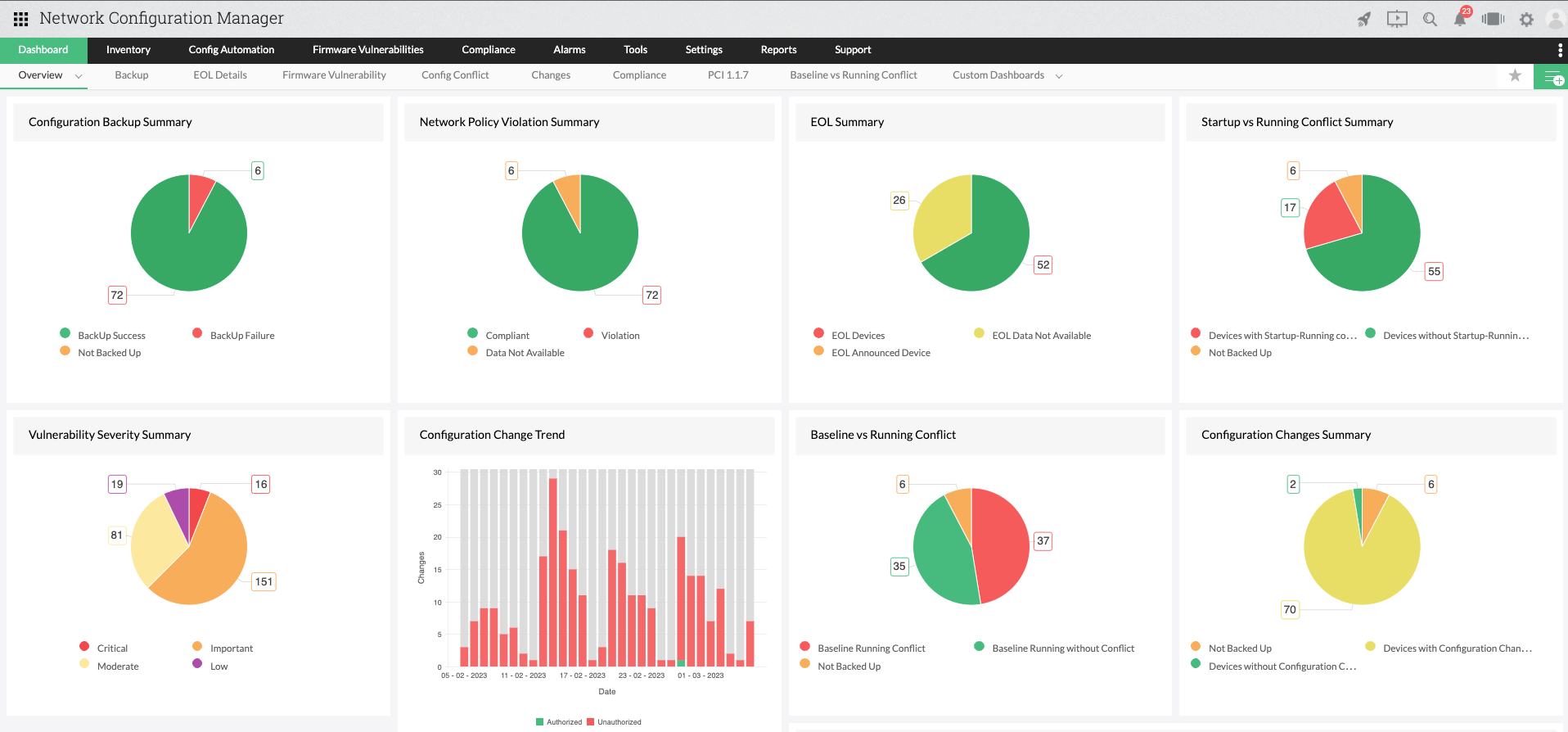
- Network Configuration Manager's dashboard is fully customizable and in widget format.
- Get a bird's-eye view of all your operations on one screen.
Reports
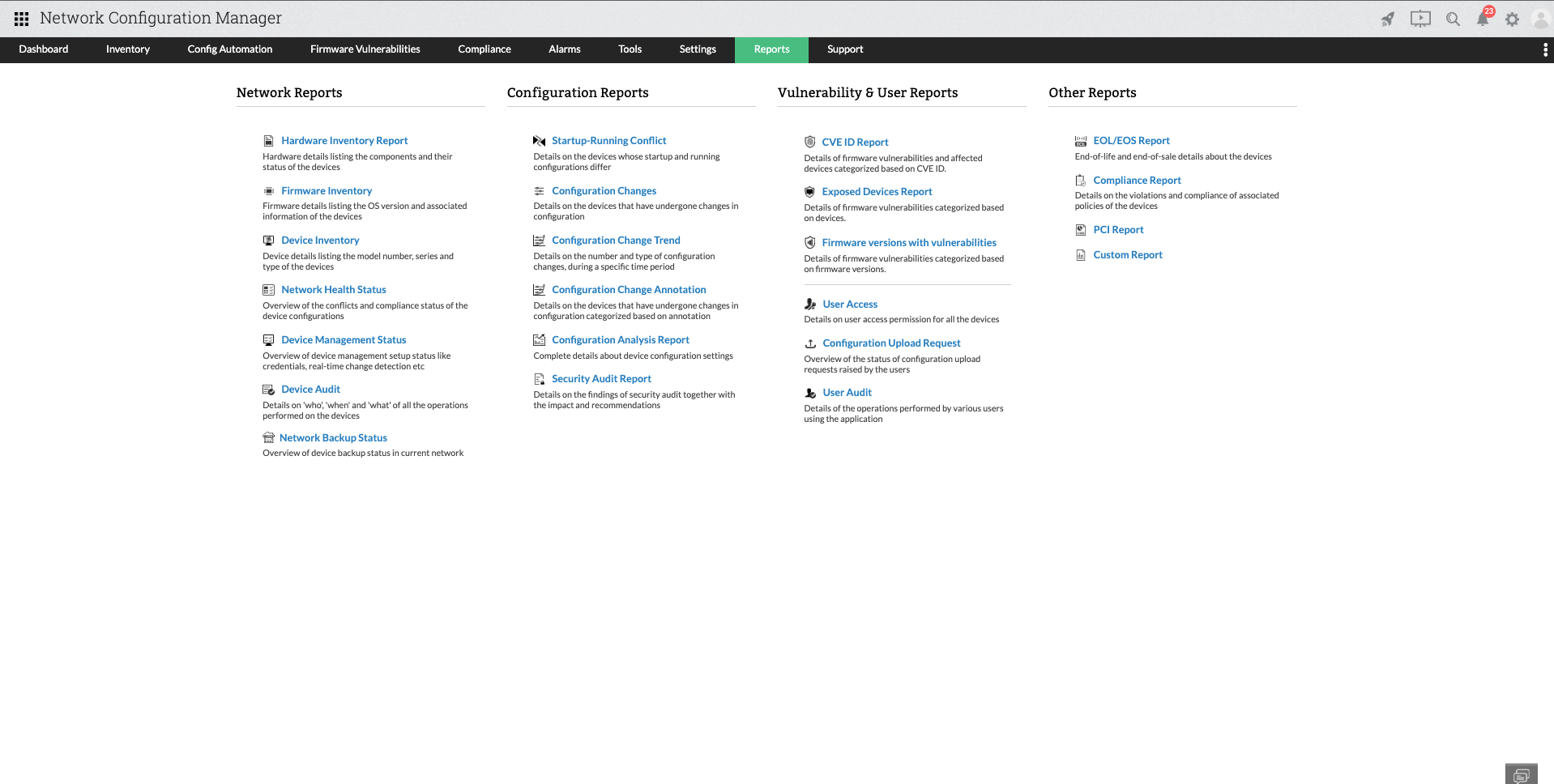
- Network Configuration Manager supports various real-time reports pertaining to different use cases.
- These reports can be exported in various formats or can be sent via email automatically when an operation is finished.
